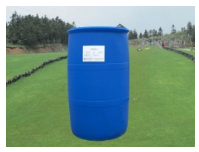Surfactant in pesticide is one of the indispensable components of pesticide preparation which can not be used directly. It can not only improve the use effect of pesticides, but also reduce the amount of pesticides, reduce the impact of pesticides on the environment, and bring great benefits to agricultural production.
However, because pesticides are a kind of special chemicals with strong biological activity, and their control objects, protection objects and environmental conditions are very complex, the surfactants in pesticides should not only be prepared according to the properties and characteristics of the original drug, but also the influence of surfactant itself on the target organisms.

The physicochemical properties of various pesticides are quite different, and the surfactants used in the preparation are also different. Not all surfactants can be used in pesticides. Surfactants as pesticide additives should have the following basic properties: first, suitable for the purpose of pesticide processing and application, and help to give full play to the efficacy; second, under the actual use conditions, it is safe for crops, and has little toxicity to human, livestock and fish; secondly, the prepared agent is stable, does not deteriorate in the effective storage period, and is convenient and safe to use; after that, it is rich in resources and low in cost Honest. As a result, the surfactant for pesticide came into being with special trade names, such as nongru 700, Nong Zhu 2, etc.
Generally speaking, surfactants are non bioactive components of pesticides. However, because pesticides are used on crops, surfactants in pesticides will have an impact on target organisms. The synergism of surfactants to pesticides is the performance of the effective effect of surfactants on target organisms.
Surfactants can improve the distribution and attachment of pesticides on the surface of plants and insects, increase the absorption of pesticides by organisms, and even increase the transport of pesticides in organisms, so as to improve the biological activity of pesticides. For example, tea saponin has a significant synergistic effect on damanling [3]; studies by Zhenguo et al. Showed that surfactants silwet2l77 and scolil significantly reduced the surface tension of Prochloraz, thus significantly increased its adhesion on leaves; ducholtz studied the transport and absorption of rh0007 (hy2brex) in winter wheat plants by several surfactants In the presence of surfactant, the absorption of the drug on the leaves increased by 0.7-1.5 times. The results showed that the interaction between glyphosate and 14ec on the epidermis of plants was influenced by the interaction of 14ec and 14ec. Surfactants with different EO values can change the hydrophilic and lipophilic properties of plant epidermis, so that hydrophilic or lipophilic agents can easily penetrate the plant epidermis; Liu Zhiqian and others reported that organosilicon surfactants can induce glyphosate to be quickly absorbed by plants through stomata.